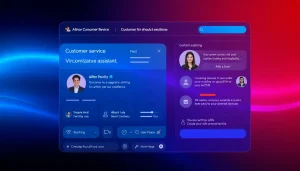Mastering Trade Futures: Strategies for Maximizing Your Investments
Understanding Trade Futures and Their Potential Benefits
In a world driven by financial markets and investment opportunities, understanding the intricacies of trade futures is crucial for those looking to enhance their portfolio. Trade futures are derivative contracts that obligate the buyer to purchase, and the seller to sell an underlying asset at a predetermined future date and price. This structure opens up a range of possibilities for traders and investors. As we delve into the mechanisms behind trade futures, we’ll explore their advantages, common misconceptions, and the broader context within which they operate.
What Are Trade Futures?
At its core, trade futures involve a commitment between two parties to exchange an asset at a future date. Typically associated with commodities like oil, gold, and agricultural products, futures contracts can also apply to financial instruments such as indices and currencies. The agreement specifies the price and the date of delivery, providing a transparent framework for trade.
Futures contracts are standardized agreements traded on futures exchanges, which govern the terms of contracts including size, expiration dates, and delivery methods. Traders engage with futures for various reasons, including hedging against price fluctuations, speculating on price movements, or diversifying portfolios.
Advantages of Trading Futures
Trading futures offers several compelling advantages that can help traders and investors capitalize on market movements.
- Leverage: Futures contracts typically require a margin deposit, allowing traders to control a larger position than their initial investment. This can amplify potential profits, though it also increases risk.
- Diverse Opportunities: With an array of underlying assets available—from commodities to currencies—traders can diversify their portfolios and engage with different sectors of the market.
- Liquidity: Futures markets are known for their liquidity, meaning there are many buyers and sellers at any given time, making it easier to enter and exit positions.
- Price Discovery: Futures markets facilitate price discovery, allowing traders to gauge the market’s expectations of future price movements based on current information.
Common Myths About Trade Futures
Despite their growing popularity, there are numerous misconceptions about trade futures that can deter potential traders. Here are some of the most common myths:
- Myth 1: Futures trading is only for professional traders. Many retail traders successfully engage in futures trading with the right education and tools.
- Myth 2: You need a significant amount of capital to start trading futures. While capital requirements can vary, many futures contracts can be traded with a modest initial margin.
- Myth 3: Futures trading is too risky. Like any investment, risk can be managed through proper strategy and risk management techniques.
Key Concepts in Trade Futures Trading
Leverage and Margin in Trade Futures
Leverage is one of the most notable features of futures trading. By requiring only a small margin deposit relative to the total value of the futures contract, traders can control large positions with less capital. However, this significant advantage comes with heightened risks. While gains can multiply, so can losses.
Understanding margin is vital for any futures trader. Margin refers to the initial capital required to open a position. Maintenance margin must also be kept in the account to cover potential losses. If the account balance falls below this level, the broker may issue a margin call, requiring additional funds to restore the minimum balance.
Market Structure and Trading Hours
Futures trading operates in a structured market environment, primarily through exchanges like the Chicago Mercantile Exchange (CME) and Intercontinental Exchange (ICE). These platforms provide the necessary infrastructure for traders to execute trades, access market data, and manage positions.
Futures markets typically operate nearly 24 hours a day, which allows traders around the world to access markets and react quickly to news and events. Continuous trading sessions help maintain liquidity and facilitate price discovery throughout the day.
Different Types of Futures Contracts
Understanding the various types of futures contracts is essential for traders looking to specialize in specific markets. Below are some of the most common categories:
- Commodity Futures: These contracts involve physical goods such as precious metals, grains, and energy products. Traders may buy or sell contracts based on anticipated price movements in these commodities.
- Financial Futures: Commonly involve financial instruments, such as stock indices, government bonds, and currencies. Their performance is often linked to broader economic indicators.
- Index Futures: These contracts allow traders to speculate on the future value of stock market indices, providing exposure to market trends without directly purchasing individual stocks.
Analyzing Markets for Trade Futures
Technical Analysis Basics
Technical analysis involves studying past price movements to predict future patterns. Traders often utilize charts and various indicators to identify trends, support and resistance levels, and potential entry and exit points.
Common technical analysis tools include moving averages, Bollinger Bands, and Relative Strength Index (RSI), which can provide additional context for making trading decisions based on historical price data.
Fundamental Analysis in Trading Futures
Alongside technical analysis, fundamental analysis helps traders evaluate the intrinsic value of an asset based on economic indicators, industry trends, and geopolitical events. Key factors include:
- Supply and Demand: Understanding market dynamics related to availability and consumption can significantly impact prices.
- Economic Reports: Data such as employment rates, consumer confidence, and inflation figures provide insights into market sentiment and economic health.
- Weather Events: For agricultural commodities, unexpected weather patterns can disrupt supply chains and cause price fluctuations.
Using Indicators in Trade Futures
Indicators act as signals that can help traders make informed decisions when entering or exiting a position. They are often derived from price movements and volume data and can be classified into different categories:
- Trend Indicators: Such as moving averages, which help identify the direction of the market.
- Momentum Indicators: Like the RSI, which measure the speed of price movements to identify overbought or oversold conditions.
- Volume Indicators: These provide insights into the strength of price movements, as higher volumes often indicate significant market conviction.
Developing a Successful Trading Strategy
Defining Your Trading Goals
Every successful trader begins with a clear set of goals and objectives. This involves determining your risk tolerance, investment horizon, and desired returns. Setting SMART (Specific, Measurable, Achievable, Relevant, Time-bound) goals can provide a structured approach to trading.
For instance, a trader might set a specific goal to achieve a 15% return within a six-month period, adjusting their strategy based on market conditions and performance assessments.
Risk Management Techniques
Effective risk management is essential for long-term success in futures trading. Several techniques can be implemented:
- Diversification: Spreading investments across various commodities or financial instruments to manage exposure to individual market movements.
- Stop-Loss Orders: Setting specific price levels at which a position will be automatically closed helps mitigate potential losses.
- Position Sizing: Determining the appropriate amount of capital to allocate to each trade based on overall portfolio size and risk tolerance.
Evaluating and Adjusting Your Strategy
A trading strategy should never be static. Regular evaluations are necessary to assess performance against established goals. This involves reviewing trade outcomes, analyzing what worked, what didn’t, and making adjustments as needed.
Utilizing trading journals can be beneficial, allowing traders to document their decisions, market conditions, and outcomes for future reference.
Tools and Resources for Trade Futures Traders
Recommended Trading Platforms
Choosing the right trading platform is crucial for managing futures trades effectively. Some popular options include:
- TD Ameritrade: Offers a comprehensive platform with innovative trading tools and educational resources.
- Interactive Brokers: Known for low commissions and access to a wide range of futures markets.
- eToro: Provides a social trading environment where traders can share insights and strategies.
Educational Materials and Courses
Investing in your education is fundamental for success in futures trading. Various resources are available:
- Online Courses: Platforms like Coursera or Udemy offer courses on futures trading ranging from beginner to advanced levels.
- Webinars: Many brokers and financial institutions provide free webinars hosted by experts discussing market trends and trading techniques.
- Books and Articles: Literature on trading strategies, market analysis, and risk management can provide valuable insights and knowledge.
Staying Updated with Market News
Staying informed is vital for active traders. Sources of market news include:
- Financial News Websites: Websites like Bloomberg, CNBC, and Reuters provide real-time updates on market conditions and economic indicators.
- Social Media: Following industry leaders and analysts on platforms like Twitter and LinkedIn can deliver insights and perspectives on market trends.
- Email Newsletters: Subscribing to specialized newsletters can deliver curated market news directly to your inbox.
Conclusion
The world of trade futures presents dynamic opportunities for both novice and experienced traders. By understanding the foundational concepts, leveraging analytical techniques, implementing sound strategies, and utilizing available tools, traders can enhance their chances of success in these complex markets. With careful planning and a disciplined approach, the rewards of trading futures can be substantial, making it a compelling choice for those looking to diversify and maximize their investments.













Post Comment